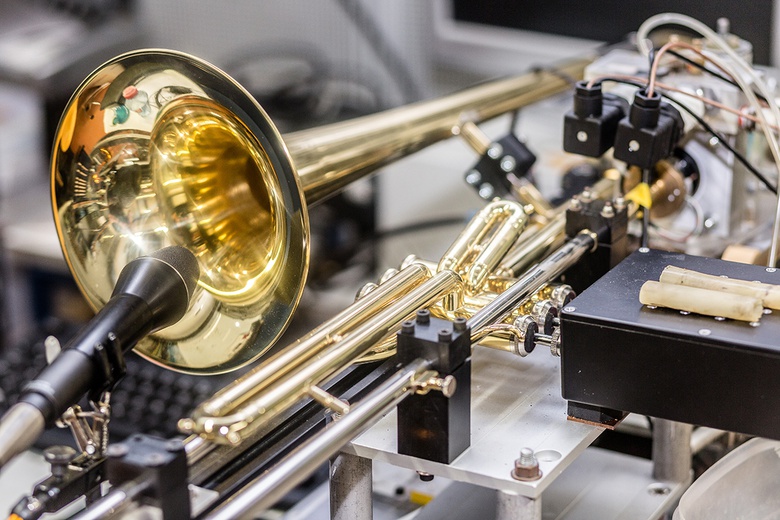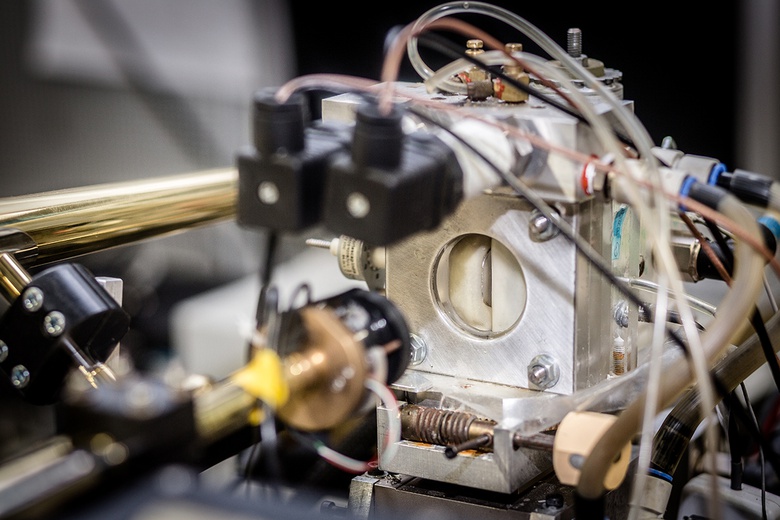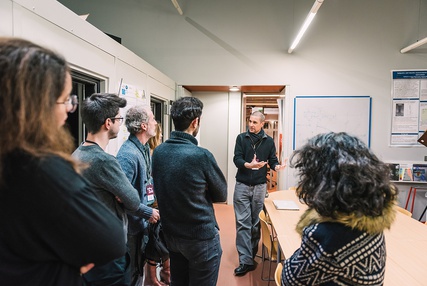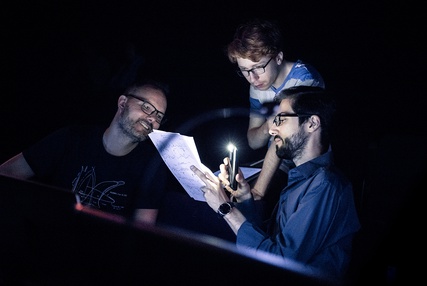Comment transformer un instrument acoustique et augmenter ses possibilités grâce aux nouvelles technologies ? Peut-on reconstituer et jouer des exemplaires virtuels d’instruments du passé, à partir de données archéologiques ? Comment visualiser le contenu d'un son ou sa justesse pendant le jeu instrumental ? Le même laboratoire qui « augmente » les possibilités d’un instrument acoustique d’aujourd’hui est capable de reconstituer virtuellement et de faire entendre un instrument antique, comme la Cornu de Pompéi. Ces questions scientifiques, technologiques et musicales traitent des systèmes et signaux sonores avec une approche physique de l’audio-acoustique et des instruments.
Venez découvrir les réponses ou en explorer certaines par vous même, en testant les instruments mis à votre disposition, ou en poussant la porte de la chambre anéchoïque exceptionnellement ouverte.
Participants
Équipe Systèmes et signaux sonores : audio-acoustique, instruments Ircam-STMS : Thomas Hélie, directeur de recherche CNRS-STMS, responsable de l’équipe, Robert Piéchaud, Quentin Lamerand, développeurs Ircam-STMS, Camille Dianoux, assistante ingénieure, Sorbonne Université-STMS, Tristan Lebrun, doctorant, École doctorale SMAER
Avec : René Caussé, chercheur émérite Ircam-STMS, Carmine Emanuele Cella, compositeur, Serge Lemouton, réalisateur en informatique musicale Ircam, Adrien Mamou-Mani, président et cofondateur de HyVibe
Programme
Studio 5
| 15h | L'archéologue et le collégien au pays des instruments de musique virtuels |
_Présentation du projet européen iMuSciCA | |
_Reconstitution virtuelle d'instruments anciens, avec pour exemple, le cornu | |
| 16h | Les SmartInstruments, de la recherche à l'Ircam aux produits HyVibe |
par Adrien Mamou-Mani | |
| 17h | Smart Instruments and Stupid Composers ou comment composer pour des instruments qui n’existent pas ? |
| par Carmine Emanuele Cella et Serge Lemouton |
Studio 2
| 15h-18h | Outils virtuels pour la visualisation et la fabrique physique du son |
avec Thomas Hélie et Quentin Lamerand |
Chambre anéchoïque
| 15h-18h | Découverte de la chambre |
avec Camille Dianoux et Tristan Lebrun |
Salle Shannon
| 15h-18h | Projection de films sur les thèmes de la journée (en continu) |
Galerie
Présentation de la start-up HyVibe par son fondateur, Adrien Mamou-Mani
 © Philippe Barbosa
© Philippe Barbosa Bouche artificielle contrôlée pour instruments à vent © Philippe Barbosa
Bouche artificielle contrôlée pour instruments à vent © Philippe Barbosa




